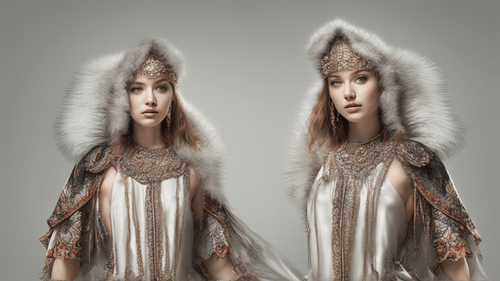
Introduction
In the ever-evolving world of graphic design and digital art, the conversion of JPG images to vector format stands as a pivotal technique. This article delves into the intricate process of utilizing Adobe Illustrator to transform JPG files into vector graphics, unlocking a realm of possibilities for enhanced image quality, scalability, and versatility.
Illustrator JPG to Vector: Unleashing Creative Potential
In the realm of digital design, vector graphics are the cornerstone of scalability, precision, and artistic expression. The process of converting JPG images to vector format through Adobe Illustrator empowers designers and artists to amplify the impact of their creations. But what exactly is this transformation, and why is it so essential?
Understanding the Conversion: From Raster to Vector
Vector graphics are based on mathematical equations, enabling them to be infinitely scaled without any loss of quality. Conversely, JPG images, classified as raster graphics, consist of pixels that can result in distortion upon enlargement. The process of converting a JPG image to vector involves tracing the pixel-based image using paths and curves, effectively recreating it with a mathematical foundation.
The Magic of Illustrator: Unraveling the Tools
Adobe Illustrator, a leading vector graphics software, provides a suite of tools specifically designed for the conversion process. These tools enable designers to meticulously trace and recreate JPG images with precision and creativity. The Pen Tool, Anchor Points, and Bezier Curves are the artist's arsenal for achieving accurate outlines and curves, resulting in a flawless vector rendition.
The Art of Conversion: Step-By-Step Process
Transforming a JPG image into a vector masterpiece requires a systematic approach, employing Illustrator's array of features. Let's embark on a journey through the step-by-step process of this conversion, showcasing the seamless fusion of artistic vision and technical finesse.
Step 1: Importing the JPG Image
The transformation commences with importing the JPG image into Adobe Illustrator. Using the 'File' menu, select 'Open,' and navigate to the desired file location. Illustrator's intuitive interface ensures a smooth importation process.
Step 2: Creating a New Layer
Before diving into the conversion, it's prudent to create a new layer dedicated to the vector rendition. This separation ensures better organization and allows for easy adjustments throughout the process.
Step 3: Tracing with the Pen Tool
Here comes the artistic prowess – tracing the image using the Pen Tool. This versatile tool allows designers to create precise anchor points and curves, capturing the essence of the original image. Careful placement of anchor points ensures an accurate representation.
Step 4: Refining with Bezier Curves
Bezier Curves come into play to refine the traced paths further. Adjusting the handles of the anchor points provides unparalleled control over the curves, resulting in a seamless and polished vector rendition.
Step 5: Color and Detail Enhancement
With the vector outline in place, it's time to infuse life and vibrancy. Selecting colors, gradients, and shading adds depth to the image, while paying attention to intricate details ensures a captivating visual experience.
Step 6: Ensuring Scalability
One of the key advantages of vector graphics is their scalability. Testing the image's adaptability by resizing it to different dimensions guarantees its versatility across various platforms and applications.
Benefits Beyond Boundaries: Versatility of Vector Graphics
The transformation from JPG to vector transcends mere technicality; it opens up a world of possibilities for designers, artists, and businesses alike. Let's explore the multifaceted advantages that vector graphics bring to the table.
Seamless Enlargement
Unlike JPG images that pixelate upon enlargement, vector graphics maintain impeccable clarity and sharpness regardless of size. This makes them ideal for large-format printing, banners, and signage.
Logo and Branding Brilliance
Branding thrives on consistency, and vector graphics ensure just that. Crafting logos and branding materials in vector format guarantees a uniform and professional visual identity across all mediums.
Effortless Animation
Vector graphics are the heartbeat of animation. Their adaptability to different screen sizes and resolutions makes them a staple in animated videos, motion graphics, and interactive web designs.
Precision in Print
Print materials demand precision, and vector graphics deliver with finesse. Whether it's brochures, business cards, or promotional materials, the quality remains uncompromised.
App and Web Excellence
In the digital realm, vector graphics contribute to faster loading times and smooth user experiences. Icons, illustrations, and UI elements created in vector format elevate the aesthetics and functionality of apps and websites.
Frequently Asked Questions (FAQs)
How does the conversion from JPG to vector enhance image quality?
The conversion involves recreating the image using mathematical equations, eliminating pixelation and distortion upon enlargement. This ensures impeccable image quality in various applications.
Can any JPG image be converted to vector?
While most images can undergo conversion, intricate and highly detailed images may require more meticulous tracing. Simple, well-defined images yield the best results.
Is Adobe Illustrator the only software for this conversion?
While Illustrator is a prominent choice, other vector editing software like CorelDRAW can also achieve similar results. Illustrator's robust toolset, however, remains a favorite among designers.
Do vector images support photographic content?
Vector graphics are better suited for illustrations, logos, icons, and designs with solid colors. For photographic content, raster images like JPG or PNG are more appropriate.
How can I learn the art of vectorization?
Mastering vectorization requires practice and familiarity with vector tools. Online tutorials, courses, and hands-on experimentation can help hone your skills.
What are some real-world applications of vector graphics?
Vector graphics find application in logo design, apparel printing, architectural drawings, web design, typography, and much more, owing to their versatility and scalability.
Conclusion
The journey from a JPG image to a refined vector graphic is a harmonious blend of artistry and technology. The transformation, facilitated by Adobe Illustrator, brings forth images that transcend limitations, scaling to new heights of creativity and utility. Embracing vector graphics instills a sense of empowerment among designers, allowing them to craft visuals that stand the test of time – an evolution from mere images to enduring works of art.